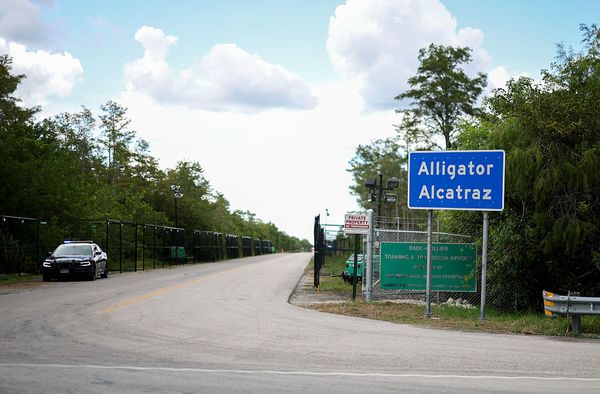
December corn futures, priced at $4.47 per bushel as of April 30, are catching the eye of professional traders, novices, and hedgers. These futures, tied to the new crop harvested in the fall, reflect expectations for the growing season, supply, and demand. May often brings a bullish tilt to corn prices due to planting uncertainties, but rapid planting and Brazil's record crop keep prices in check. Could a rally push prices to $5? What might the USDA's May WASDE report show? And how can traders and hedgers position themselves? This article breaks it down for everyone, from seasoned speculators to farmers hedging their crops.
Technical Picture for Corn

Source: Barchart
The daily December corn contract traded on the CME Group exchange reflects prices that have changed little for the year-to-date. The question for market participants is: Can December corn trade at $5? We will discuss corn's bullish and bearish outlooks as we go deeper into this article.
Seasonal Pattern

Source: Moore Research Center, Inc. (MRCI)
MRCI research has found that the corn market has made a slow grind rally over the past 15 years (black line) as the second quarter begins. As June approaches, planting is complete, and concerns shift to supply issues ahead of the upcoming fall harvest. The seasonal May price rally typically allows hedgers to sell into this strength before the post-planting season price decline.
What Could Drive a December Corn Rally in May?
Several factors could support a rise in December corn futures in May, aligning with the seasonal preference for price gains during planting. Here's what to watch:
Weather Disruptions: May is critical for US corn planting, especially in the Midwest. The USDA's Crop Progress report for April 27 indicates that 24% of the crop has been planted, surpassing the 12% five-year average. But NOAA's May 6–12 outlook flags dry conditions in the eastern Corn Belt. While the eastern Corn Belt is not as significant as the Midwest Corn Belt, traders should pay attention to dry weather spreading into the central part of the country. If dryness turns into drought or heavy rains stall planting, markets could add a 30–50 cent weather premium. For example, if planting drops to 40% by mid-May (compared to the average of 60%) or soil moisture shortages emerge, fears of lower yields could drive prices up.
Export Demand: US corn exports are up 29% year-over-year at 1.61 billion bushels, outpacing USDA's 17% growth forecast. A large sale—say, 10–20 million bushels to China—or supply issues in Brazil (e.g., flooding or port delays, as their infrastructure has been known to fail, resulting in the inability to transport crops to ports) could tighten new-crop expectations. A weaker US dollar or progress on a US-China trade deal, hinted at by the White House on April 29, might boost exports, adding 20–40 cents to futures.
Ethanol Demand: A potential emergency waiver for nationwide E15 sales in summer 2025 could increase ethanol demand by 100–200 million bushels, given ethanol's 40% share of U.S. corn use. If ethanol plants ramp up in May, this could support December futures. Higher crude oil prices (now $60 per barrel) may also make ethanol more competitive, increasing corn demand.
Global Supply Issues: Brazil's record 2024/25 harvest is putting pressure on prices. However, disruptions such as drought in its second crop (Safrinha) or problems in Ukraine or Argentina could shift demand to US corn, potentially raising prices.
Speculative Buying: Managed Money held their most prominent net long position in corn futures in two years at the beginning of the year. Since then, they have been liquidating their long positions until April 15 and are aggressively repurchasing corn, as indicated by the blue bars on the chart below. They now have 100K more longs than at this time last year. Weather or export news could spark more buying, especially if prices break above $4.80, a key resistance level.

Source: CME Group Exchange
Tighter Supplies: The USDA projects 2025/26 ending stocks at 2.208 billion bushels, up 28% from 2024/25, but early estimates often overstate actual stocks. If May's USDA reports show fewer acres (below 94 million) or lower yields (below 181 bushels/acre), markets could rally.
Can December Corn Hit $5?
At $4.47 per bushel, December 2025 futures would need a 12% jump to reach $5 in May. It's possible, but it requires a strong catalyst. Here's the outlook:
Bullish Case ($5+): A planting delay to 40% by mid-May, early drought, or a 20–30 million bushel Chinese purchase could add 30–50 cents. A USDA report cutting acres by 1–2 million or yields by 5% might push prices to $5, especially if speculators drive momentum above $4.80. In 2019, wet weather triggered similar gains.
Best Case ($4.65–$4.85): Rapid planting (24% done), favorable weather, and Brazil's supply limits US price upside. With minor weather concerns, May's bullish seasonal pattern may add 10–20 cents, but a $5 trigger requires a bigger catalyst. The USDA forecasts a season-average corn price of $4.20 per bushel for the 2025-26 marketing year. This represents a 15-cent decrease compared to the previous year. Some analysts predict $5.50–$6, but a more realistic range is $4.65–$4.85.
Bearish Case ($4.30 or Lower): Smooth planting, ideal weather, or tariff issues could drive prices below $4.30, especially with a stronger dollar or as Brazilian crops reach their ports and exports begin to flow.
Verdict: $5 is reachable with weather disruptions or export surges, but $4.65–$4.85 is more likely without multiple catalysts. Track USDA Crop Progress, NOAA weather, and export sales to support your analysis.
May 2025 WASDE Report Estimates
The USDA's May 10 WASDE report will shape December corn prices. Based on current estimates, here's what to expect for 2025/26:
Acreage: Likely 93–94 million acres, slightly below USDA's April estimate of 95.3 million, as high input costs and soybean rotation may trim planting. A 1–2% cut could add 10–15 cents to futures.
Yield: Expected at 180–181 bushels/acre, aligning with USDA's projection. If dryness or delays signal lower yields (e.g., 178 bushels per acre), prices could rise by 15–20 cents.
Production: Projected at 15.1–15.3 billion bushels, down from 15.4 billion if acres or yields fall. A smaller crop would tighten stocks.
Ending Stocks: Estimated at 2.1–2.2 billion bushels, below USDA's 2.208 billion, as exports (2.3 billion bushels) and ethanol use (5.5 billion bushels) outpace forecasts. Tighter stocks could lift prices by 10–20 cents.
Price: USDA may adjust its season-average corn price upwards and signal a tighter supply outlook.
Impact: A bearish report (higher stocks, yields) could push prices to $4.30. A bullish report (lower acres, yields, or stocks) might drive futures to $4.65–$4.85, or $5, with multiple other risks.
Why Are Speculators Bullish Despite Bearish Fundamentals?
Large speculators aggressively build their net long position despite rapid planting, Brazil's harvest, and higher 2025/26 stocks. Here's why:
Supply Expectations: USDA's 2.1% yield cut for 2024/25 and lower-than-expected stocks suggest 2025/26 estimates may shrink. If acreage or yields decline, supplies could become tighter.
Demand Strength: Exports (up 29%) and E15-driven ethanol demand signal growth. Speculators expect sustained buying, particularly if global supply disruptions occur.
Weather Bets: May's planting risks prompt funds to position for disruptions, like rain or drought, which could add 20–30 cents.
Technical Signals: July futures are near the 200-day moving average (~$4.75). A breakout could pull funds into December contracts.
Short Squeeze: Bearish fundamentals may have led commercials to short too early, setting up a squeeze if a catalyst forces them to cover.
Risk: If planting reaches 60% by mid-May and no shocks emerge, speculators may exit, potentially driving prices down. The April 29 sell-off, which resulted in a 9.75-cent decline in July futures, illustrates this risk.
How Can Speculators Participate?
The following comments are not meant to be trading advice. All traders are responsible for conducting due diligence.
Speculators, from novices to pros, can trade December corn futures with these approaches:
Futures Contracts:
How: Buy December 2025 futures (ZC) (5,000 bushels per contract) on the CME. At $4.47, one contract is $22,350. The margin is approximately $2,000–$3,000.
Strategy: Go long if weather or WASDE turns bullish, targeting $4.65–$4.85. Set stops at $4.30. Pros can use standard-size contracts, but novices should try mini-contracts (XN) of 1,000 bushels.
Risk: High volatility; losses can exceed margin.
Options:
How: Buy December call options (e.g., $4.60 strike, ~20–30 cents) for $1,000–$1,500 per contract. Caps losses at the premium.
Strategy: Buy calls if expecting a rally to $5. Sell before expiration (November 2025) if prices stall. Pros can use spreads (buy a $4.60 call, sell a $5 call) to reduce costs.
Risk: Time decay hurts if prices don't move quickly in your favor.
ETFs:
How: Trade corn ETFs like Teucrium Corn Fund (CORN). It is simpler for novices and has less leverage.
Strategy: Buy shares if bullish and hold for the May rally. Pros can hedge with options.
Risk: Lower returns vs. futures.
Spread Trading:
How: Trade calendar spreads (buy December 2025, sell March 2026) to bet on May 2025 strength. Pros can utilize inter-commodity spreads, such as corn versus soybeans.
Strategy: Limits risk, targets 10–20 cent gains. Requires margin but less than outright futures.
Risk: Complex; novices must study spread trading before attempting to trade them.
Should Hedgers Wait to Hedge?
Hedgers (farmers selling new-crop corn) must decide whether to lock in $4.47 now or wait for a May rally:
Wait: May's 2–5% price gains suggest $4.65–$4.85, or $5 with a significant shock. The May 10 WASDE or weather issues could lift prices.
Speculative longs and potential stock reductions support waiting 2–3 weeks.
Hedge Now: $4.47 beats the USDA's $4.20 and guards against drops to $4.30 if planting remains smooth or tariffs are implemented.
Speculative unwind risks a sell-off, as seen on April 29.
Plan: Hedge 25–50% now at $4.47. Wait on the rest, targeting $4.65–$4.85 if planting lags or WASDE is bullish. Buy $4.40 puts (~30–40 cents) for protection if planting hits 50% by May 15, and hedge fully.
In Closing…..
December corn could rally in May if weather falters, exports surge, or the WASDE tightens supply. $5 is possible but needs a firm push; $4.65–$4.85 is more likely. Managed Money traders are betting on disruptions, but their prominent long position carries a risk of reversal. The May WASDE could shift prices by 10–20 cents in either direction, so keep an eye on acreage and stocks. Speculators can trade futures, options, or ETFs, while hedgers should split their hedges and stay flexible. To navigate this market effectively, monitor USDA reports, weather forecasts, and trade news for your corn market analysis.
On the date of publication, Don Dawson did not have (either directly or indirectly) positions in any of the securities mentioned in this article. All information and data in this article is solely for informational purposes. For more information please view the Barchart Disclosure Policy here.






